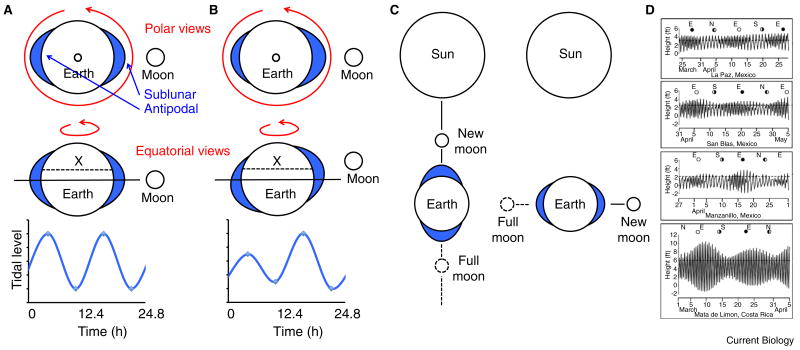Figure 1.
Organisms in the intertidal habitat are exposed to complex yet predictable tidal regimes.
(A) The gravitational pull of the moon causes high tides (represented by the blue water bulge) on the region closest to the moon (sublunar) as well as on the region diametrically opposed to it (antipodal). As the earth rotates under this deformed shell of water, any particular seacoast will experience two tides per lunar day (i.e., every 12.4 h). (B) The moon typically orbits off the equatorial plane; at some phases of the lunar month it is deviated northward (as in the example shown) and at other phases deviated southward. These deviations lead to tidal bulges that are north or south of the equator. As a consequence, successive low and high tides are asymmetric on seashores that are off the equator — any point on the ‘X’ dotted line as an example, diamonds on curve. (C) The added gravitational pull of the moon and sun lead to maximally high and maximally low tides on the phases of the moon month on which the earth, moon and sun are aligned on the same axis, during full and new moons (left). Conversely, tides are minimally high and minimally low when the earth–moon axis is perpendicular to the earth–sun axis (right). (D) The constant change in the relative position of the earth, moon and sun lead to complex regimes that are predictable and differ among different coasts. The dotted line indicates the level at which the same species of fiddler crab lives on each shore. ‘D’ from [6] with permission.

